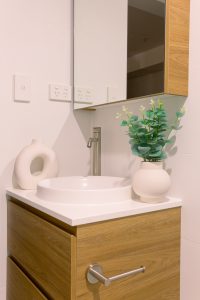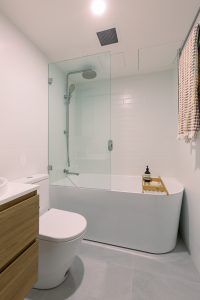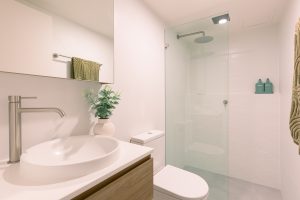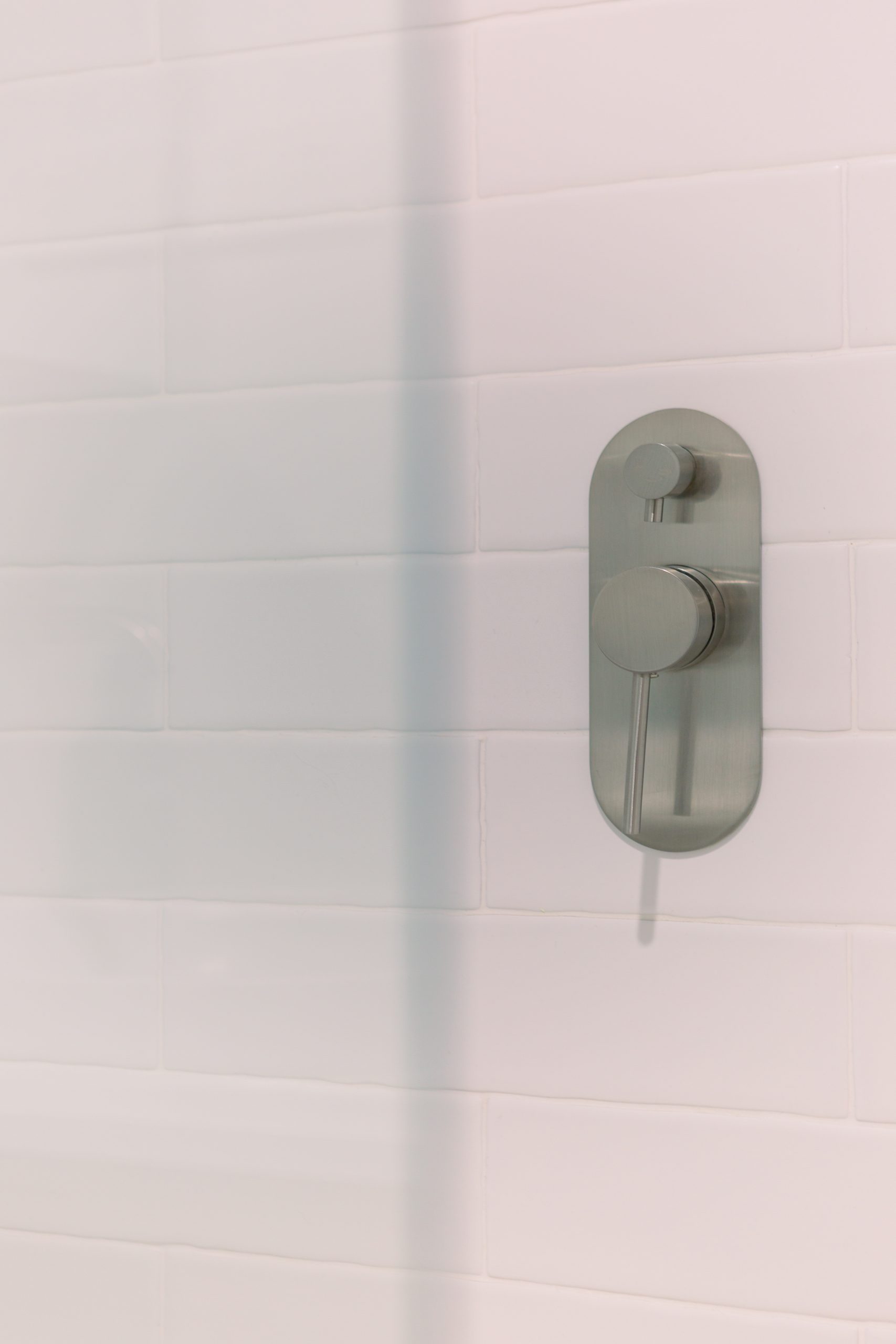5 of the Very Best Wall Options for the Bathroom
The walls in the bathroom are not the same as the walls in other rooms of the house. Any kind of wall covering will do the trick in entirely dry areas like living rooms, bedrooms, corridors, and other such spaces. Even kitchens, which are typically dry environments, are open to having nearly any kind of wall covering applied to them. This is made possible in kitchens by the use of backslashes, which protect crucial regions. However, in restrooms, water can be found coming from every angle. The damaging effects of moisture on bathroom walls can come not just from direct overspray from the bathtub and shower but also from moisture-laden air. Ventilation fans in bathrooms are helpful, but even bathrooms with adequate ventilation might have problems with excess moisture.
Vinyl Wallpaper
 When it comes to the practicality of bathroom wall coverings, vinyl-coated wallpaper is among the more advantageous solutions (all paper coverings will degrade in a moist environment). However, if the thought of a hotel comes to mind when you consider wallpaper made entirely of vinyl, you should reconsider. Vinyl wallpaper has matured and evolved into a more sophisticated material. Beautiful vinyl wallpapers, the likes of which can be found from retailers like Tempaper, have been seen gracing the walls of homes that have been featured in style magazines and shelter publications.
When it comes to the practicality of bathroom wall coverings, vinyl-coated wallpaper is among the more advantageous solutions (all paper coverings will degrade in a moist environment). However, if the thought of a hotel comes to mind when you consider wallpaper made entirely of vinyl, you should reconsider. Vinyl wallpaper has matured and evolved into a more sophisticated material. Beautiful vinyl wallpapers, the likes of which can be found from retailers like Tempaper, have been seen gracing the walls of homes that have been featured in style magazines and shelter publications.
Be sure that the surface of your existing wall can accommodate peelable vinyl wallpaper before you begin. Peelable vinyl wallpaper, which is less adhesive than permanent wallpaper, will not attach to matte, flat, or rough surfaces. This is because peelable vinyl wallpaper is less tacky. In addition, vinyl wallpaper is the material that performs the best when dealing with indirect or ambient wetness. Therefore, employ it in conjunction with a surface that, when applied, will cover the lowest portion of the walls. However, there are some vinyl wallpapers that can resist direct contact with water, such as in a shower stall. These wallpapers are available.
One advantage of using vinyl wallpaper is that you may test it out first before really applying it to the wall. Purchase a roll or a sample, and then affix it to the walls of the space. Large designs will give the impression that your bathroom is smaller than it actually is. Your eyes are drawn upward, which gives the impression that the room is taller. Horizontals seem to widen it.
Bathroom Paint with a Semi-Gloss Finish or Regular Interior Paint
 The term “bathroom paint” refers to conventional interior paint that has been modified to include additional qualities that make it more suitable for use in bathrooms. When it comes to typical interior paint, the first thing that should be avoided is getting painted with a flat or matte surface. This is because the pores in these paints collect water. The use of a semi-gloss or even a high-gloss sheen, which causes water to bead up on the surface, is a tried-and-true method for avoiding this issue. The use of premium paints that contain mold-killing chemicals, on the other hand, enables you to get the desired matte finish in the bathroom.
The term “bathroom paint” refers to conventional interior paint that has been modified to include additional qualities that make it more suitable for use in bathrooms. When it comes to typical interior paint, the first thing that should be avoided is getting painted with a flat or matte surface. This is because the pores in these paints collect water. The use of a semi-gloss or even a high-gloss sheen, which causes water to bead up on the surface, is a tried-and-true method for avoiding this issue. The use of premium paints that contain mold-killing chemicals, on the other hand, enables you to get the desired matte finish in the bathroom.
The low cost of applying paint on the walls of your bathroom is the main advantage of this option. Cost-effective interior paint options include eggshell and semi-gloss finishes. The use of paint specifically designed for bathrooms, which can cost up to twice as much as ordinary acrylic-latex interior paint, is still a far more cost-effective option than the use of wallpaper, tile, or any other hard surface.
Tile made of ceramic or glass
The use of ceramic tile on bathroom walls is a time-honored tradition. When using tile, as long as it is installed correctly, there will never be a problem with moisture. Even surfaces that are constantly submerged in water, such as the interiors of bathtubs and swimming pools, have been covered in tile ever since the time of the ancient Romans.
Your primary concern should be with the design. Every tile has lines created by the grout between the tiles. Lines generate patterns, which can either contribute to or detract from the overall aesthetic value of the bathroom. When there are an excessive amount of tiles in space, the atmosphere can become cluttered, heavy, clinical, and even sad. A satisfactory compromise would be to tile only part of the wall. When ceramic tile is used as a wainscot, it typically terminates at a set point on the wall; this point is typically somewhere about 36 inches.
Beadboard
 The beadboard only covers the lower half of the wall, hence it is only suitable for partial coverage. When it comes to issues with condensation, however, the lower part of the structure is the most significant component. Beadboard may be painted with either a semi-gloss or a glossy paint, either of which provides an excellent level of protection against moisture for the bottom portions of the wall.
The beadboard only covers the lower half of the wall, hence it is only suitable for partial coverage. When it comes to issues with condensation, however, the lower part of the structure is the most significant component. Beadboard may be painted with either a semi-gloss or a glossy paint, either of which provides an excellent level of protection against moisture for the bottom portions of the wall.
Beadboard should be purchased in panels that are eight feet long and four feet high for the easiest possible installation. When laid down lengthwise, these longboards are installed with construction adhesive and finish nails in a relatively short amount of time. Beadboard panels installed individually will provide the appearance of a more sophisticated and historically accurate space.
The traditional appearance that beadboard lends to a bathroom can be viewed as either an advantage or a disadvantage. Beadboard is an excellent choice for bathrooms that have a more classic design. Beadboard is awkward and out of place in today’s bathrooms because of their contemporary design.
Tileboard
Tileboard has the appearance of ceramic tile when first observed. Tileboard is available in big format panels, which enables the installation of a wall covering that appears to be tile but actually only takes a few minutes and covers 32 square feet.
Tileboard that is of higher quality looks more like actual ceramic tile and has a worn surface that has been treated so that it does not absorb moisture. Due to the fact that it has an inexpensive look and is simple to install, the tileboard is best suited for usage in a bathroom that is used by guests or in the basement. Tileboard is an inexpensive material that can rapidly repair wall problems, but it does not add much value to your property in the long run.
If water is allowed to penetrate the back of the tileboard, it will quickly expand and never return to its previous dimensions. This is one of the drawbacks of using a tileboard. Keeping all seams and edges caulked using silicone caulk that is designed for use in bathrooms is one strategy for avoiding this issue.
START THE TRANSFORMATION
 Are you ready to renovate your bathroom? Contact our leading bathroom remodeling expert in Sydney, experienced with design and construction, we help you with small or large-scale projects. With completed over 100 bathroom projects and many reviews from previous clients, we are proud to offer our clients a 100% customer satisfaction guarantee. Contact us today for a design consultation, book online, or call 0466 594 042.
Are you ready to renovate your bathroom? Contact our leading bathroom remodeling expert in Sydney, experienced with design and construction, we help you with small or large-scale projects. With completed over 100 bathroom projects and many reviews from previous clients, we are proud to offer our clients a 100% customer satisfaction guarantee. Contact us today for a design consultation, book online, or call 0466 594 042.


